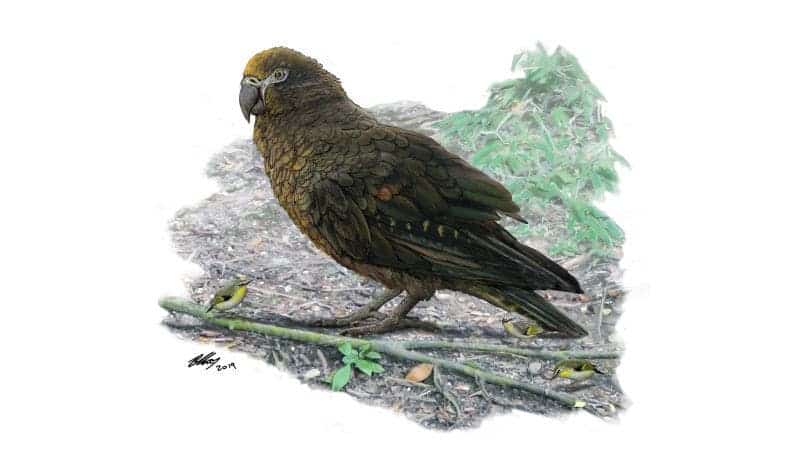Remains of a huge parrot have been found in New Zealand. The one meter-tall bird has been estimated to have weighed in at around 15.4 pounds (7 kilograms) when it roamed the Earth 19 million years ago. Aside from being half the size of an adult, given its stature, it was probably flightless and carnivorous.

The bird was discovered near St. Bathans in New Zealand’s southern Otago region. During the days of the giant parrot, the area was an ancient lake-bed, swarming with prehistoric crocodiles, fish, and birds, most of which no longer exist.
“New Zealand is well known for its giant birds,” said Trevor Worthy, co-author of the study and a professor at Australia’s Flinders University. “Not only moa dominated avifaunas, but giant geese and adzebills shared the forest floor, while a giant eagle ruled the skies. But until now, no one has ever found an extinct giant parrot – anywhere,” he said.
The fossils were first discovered in 2008, but researchers initially thought that the bones belonged to an eagle. The remains went unanalyzed for over a decade until Ellen Mather, a graduate student of Worthy’s, took a closer look and found that they didn’t belong to an eagle at all.
The new species was coined Heracles inexpectatus after the muscled Greek hero, and the remarkable nature of the find. Due to its size, paleontologists believe it would have had a “massive parrot beak that could crack open anything it fancied” and “may well have dined on more than conventional parrot foods, perhaps even other parrots.”
The Heracles is double the size of the severely endangered flightless New Zealand kakapo, previously the largest known parrot. Heracles is also comparable in size to a giant “dogo” pigeon from the Mascarenes Islands.
Worthy states that the region is a hotbed for new finds and he believes this trend will continue.
“We have been excavating these fossil deposits for 20 years, and each year reveals new birds and other animals…no doubt there are many more unexpected species yet to be discovered in this most interesting deposit,” Worthy concluded.
The study has been published in the journal Biology Letters.



